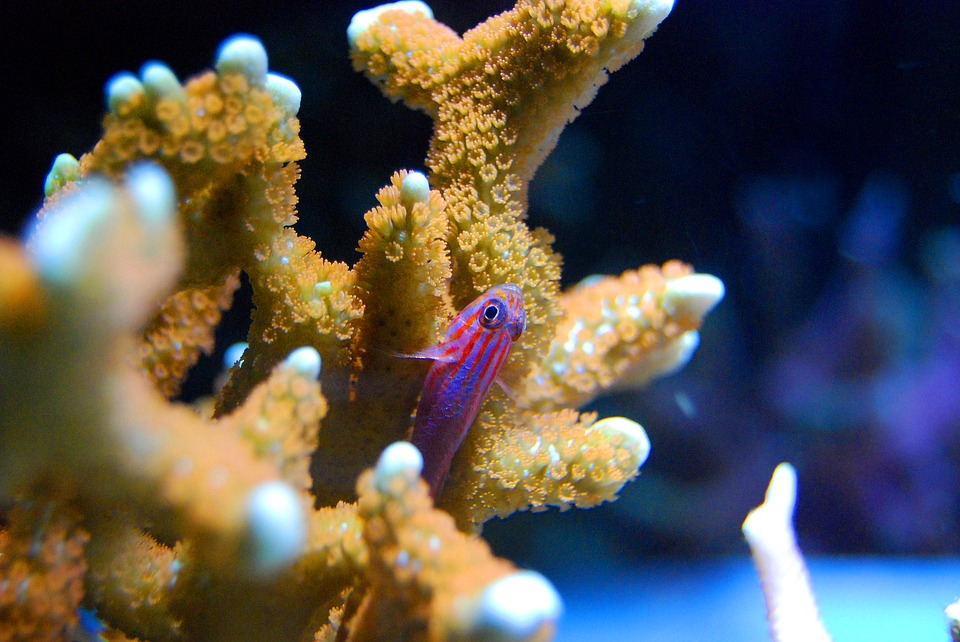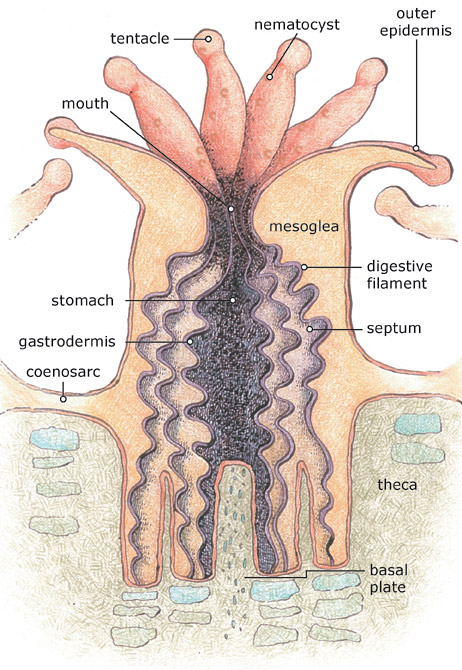Coral Polyps: The Building Blocks of Coral Reefs
Coral bleaching is the biggest threat facing current reef systems. A recent study of 100 reefs showed that bleaching events, previously occurring between 25-30 year, now occur on average every six years. Caused by the increasing temperature of surrounding water, coral polyps can’t handle the heat leading to their discolouration and with prolonged exposure death. But what are coral polyps facing this threat?
As a living creature and a relative of the jelly fish, coral polyps work as a network to form the great reefs we see today. Essentially, polyps are a collection of tiny sea stomachs, taking food from the oceans then forming the building blocks of a coral reef.
Encircled with stinging tentacles, is a mouth leading to the polyp’s sac-like stomach. This stomach is where calcium and carbonate ions from the seawater are formed into a calcium carbonate skeleton. The skeleton, made from the same material as limestone, creates the home in which polyps sit on and retreat to in the daytime until their nocturnal feeding begins. To generate the energy for their skeletal formation, polyps feed through multiple avenues.
The tentacle surrounding their mouths are laced with stinging cells called nematocysts. When passing zooplankton encounters a tentacle they become stunned and are push into the mouth of a hungry polyp. This isn’t however the only way polyps obtain energy, internal algae play a key role.
Held within the tissue of the polyps are algae called zooxanthellae. In a symbiotic relationship between the polyp and the algae, coral polyps obtain nutrients form the by-products of the algae’s process of photosynthesis and vice versa from the polyp’s respiration. In the space of only around 6.5 square centimetres, there are several million zooxanthellae within polyps. These algae don’t just help feed the polyp, but play a potent role in creating the spectrum of a corals colourful appearance.
However, with bleaching events on the rise, could these colourful creations may be washed out with the tide forever? For more information about bleaching and the projects fighting for coral reefs, visit conservation organisations such as the Coral Reef Alliance or Reef-World Foundation.
For more science and technology articles, pick up the latest copy of How It Works from all good retailers or from our website now. If you have a tablet or smartphone, you can also download the digital version onto your iOS or Android device. To make sure you never miss an issue of How It Works magazine, subscribe today!
If you liked this story you might enjoy these:







